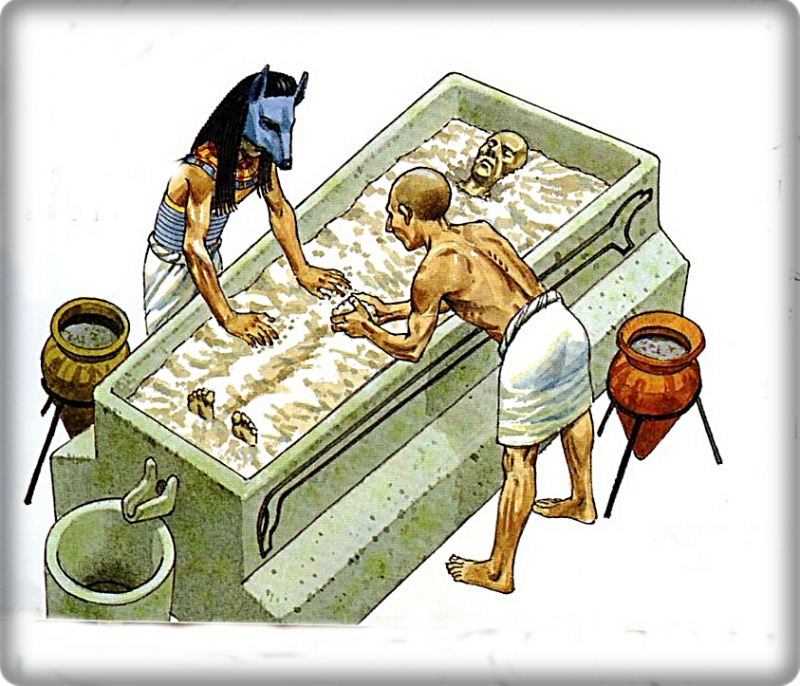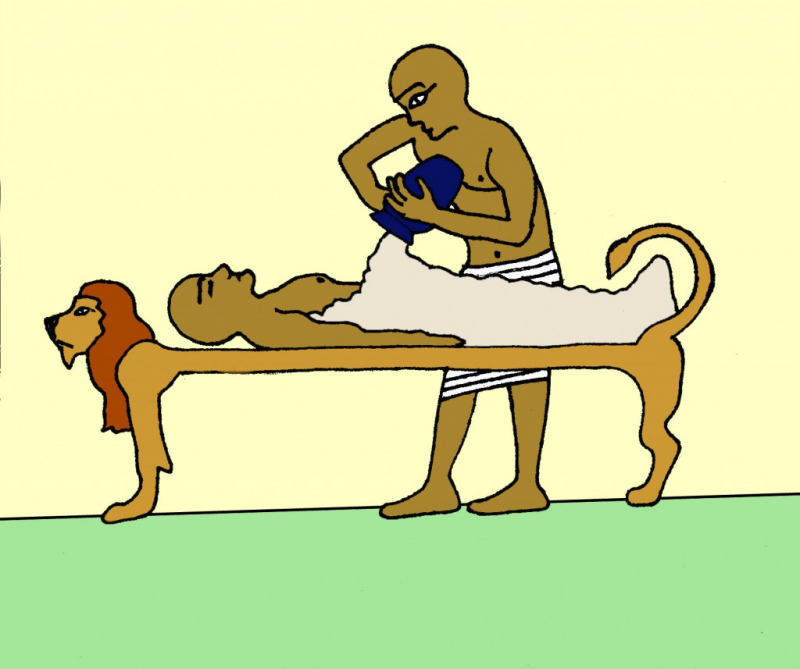Mummification Required Drying the Dead Body With a Type of Salt Called Natron
The following stage was to remove all the body's fluids once the internal organs were removed. The body was covered in natron to achieve this. The essential element in the mummification process was natron, a disinfectant and desiccating agent. Natron, which is made up of sodium carbonate and sodium bicarbonate (salt and baking soda), dried up the body. It was collected from dried-up riverbeds and wrapped around and inside the body in linen sacks for 35 to 40 days to drain moisture from the tissues. The bodily tissues were preserved by removing the organs and filling the interior cavity with dry natron. To make the body more flexible, it was filled with Nile mud, sawdust, lichen, and textile remnants.
Inside the body, additional natron packets were also implanted. The inside packets were removed and natron was lightly wiped off the body once it had dried fully. This process took about 40 days on average and resulted in an extremely dried-out but recognizable human figure. This maybe one of the interesting facts on the mummification process with many people because they don't think it would be taking a long time like this. The portions of the corpse that had become sunken during the dehydration process were filled out with linen and other materials to make the mummy look more lifelike. False eyes were also implanted to boost the mummy's appearance.












